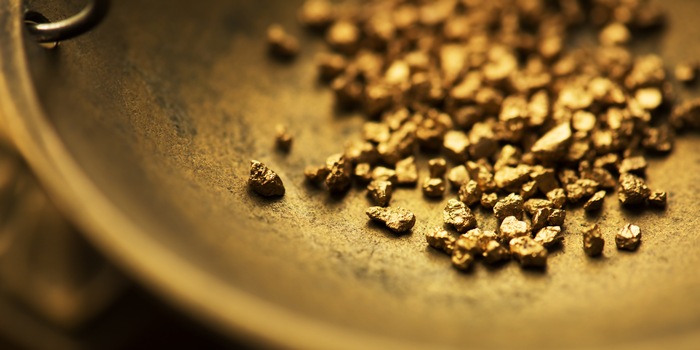
Particle physicists make gold from lead
It is the old dream of alchemy: turning base metals into gold. A research team at CERN has now succeeded in doing what the "philosopher's stone" could not - if only for a brief moment.
The «philosopher's stone» that alchemists once sought is not actually a stone, but a particle accelerator. Gold nuclei are regularly created in the Large Hadron Collider (LHC) at CERN near Geneva in Switzerland when two lead nuclei accelerated to almost the speed of light narrowly miss each other. A research team has now quantitatively determined how much gold is produced in the process. The analysis shows that around 86 billion gold nuclei were created in the LHC between 2015 and 2018. In terms of mass, however, this corresponds to just 29 picograms.
The transformation of the base metal lead into the precious metal gold was a dream of the ancient alchemists. This wishful thinking, known as chrysopoeia, could come from the fact that the dull grey, relatively common lead has a similar density to gold. However, it later became clear that lead and gold are two different chemical elements and that it is not possible to convert one into the other using chemical methods.
Since the middle of the 20th century and the emergence of nuclear physics, however, it has become clear that it is indeed possible to transform heavy elements into others using physical methods - either naturally through radioactive decay or in the laboratory through targeted bombardment with neutrons or protons. This process is called transmutation. In 1980, nuclear physicist Glenn Seaborg was the first to carry out the transmutation of bismuth into gold.
In the LHC, gold nuclei are created when two lead nuclei just miss each other. This triggers a process known as electromagnetic dissociation, in which a photon causes the inner structure of the lead (a nucleus with 82 protons) to vibrate. This in turn leads to the ejection of a small number of neutrons and protons. To produce gold (a nucleus with 79 protons), three protons must be removed from a lead nucleus. The research team's results show that the ALICE experiment in the LHC currently produces a peak of 89,000 gold nuclei per second in lead-lead collisions. However, they only exist for tiny fractions of a second, as they immediately decay into individual protons, neutrons and other particles due to their high energy. This shows that The alchemists' dream may have technically come true, but the hopes of getting rich with it are close to zero.
Spectrum of science
We are a partner of Spektrum der Wissenschaft and want to make sound information more accessible to you. Follow Spektrum der Wissenschaft if you like the articles
Originalartikel auf Spektrum.de
Experts from science and research report on the latest findings in their fields – competent, authentic and comprehensible.
From the latest iPhone to the return of 80s fashion. The editorial team will help you make sense of it all.
Show all